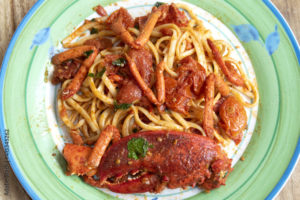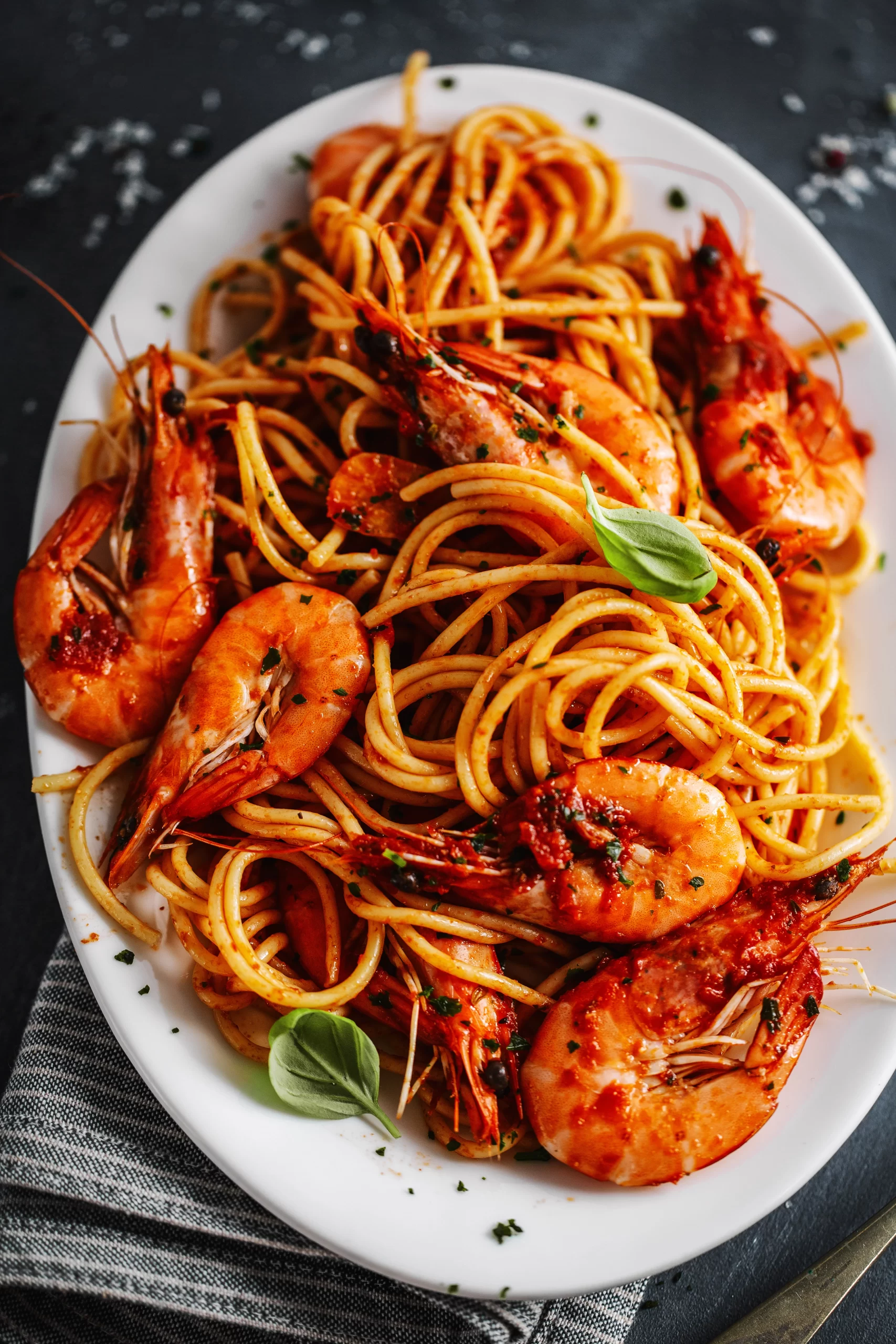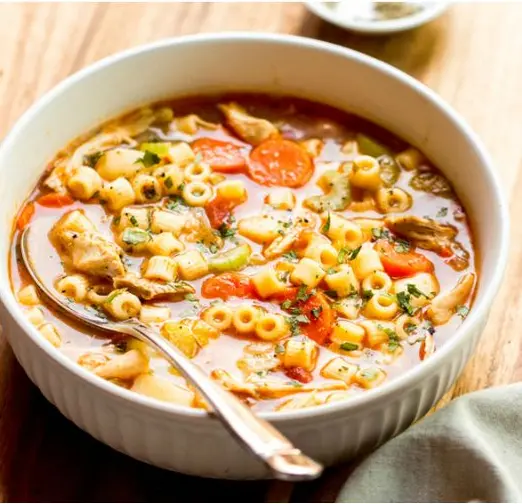Lobster pasta, a dish that marries the opulence of lobster with the humble simplicity of pasta, creates a culinary experience that’s both luxurious and comforting. This article will guide you through the journey of creating the perfect lobster pasta, from selecting the finest lobster to mastering the art of pasta cooking. Each section is crafted to enhance your cooking skills and enrich your kitchen repertoire.

Introduction to Lobster Pasta
Lobster pasta is not just a dish; it’s a celebration of flavors and textures. The combination of tender, succulent lobster and perfectly cooked pasta, all swathed in a rich, flavorful sauce, makes for a dining experience that’s both sophisticated and deeply satisfying. In this section, we’ll delve into the rich history of lobster in cuisine, tracing its journey from a humble sea creature to a symbol of culinary luxury.
The Rich History of Lobster in Cuisine
Lobster’s journey in the culinary world is as fascinating as it is diverse. Once considered the food of the poor and the prisoners, lobster has transformed over the centuries into a luxury ingredient. This transformation is a testament to the versatility and unique flavor of lobster, which can elevate even the simplest of dishes to gourmet status.
In the world of pasta, lobster brings a touch of elegance and a burst of sea-fresh flavor. The combination of lobster and pasta has been a staple in coastal cuisines, where the freshness of the catch is paramount. This pairing has evolved over time, with each culture adding its unique twist, resulting in a variety of lobster pasta dishes that are as diverse as they are delicious.
Preparing Lobster for Pasta Dishes
Once you’ve selected the perfect lobster, the next step is preparing it for your pasta dish. This process is crucial as it sets the stage for the flavor and texture of your lobster. We’ll cover how to cook your lobster to perfection and the best methods for extracting the meat from the shells.
How to Cook Lobster Perfectly
Cooking lobster can seem daunting, but with the right technique, it’s quite straightforward. Start by bringing a large pot of salted water to a rolling boil, similar to the initial steps in this Pasta with Lobster Sauce recipe. The saltiness of the water should mimic seawater, providing the lobster with a familiar cooking environment.
Gently place the lobsters in the boiling water and cover the pot, as detailed in this guide on Buttered Lobster Pasta with Cherry Tomatoes.. A good rule of thumb is to boil the lobster for about 7-8 minutes per pound. This ensures that the lobster is cooked through but still tender.Once cooked, remove the lobsters and place them in an ice bath, a technique also used in this Creamy Lobster Pasta recipe. to stop the cooking process immediately. This step is crucial to maintain the lobster’s delicate texture.
Extracting Meat from Lobster Shells
Extracting meat from lobster shells is an art in itself. Start by removing the claws and tail from the body. Crack the claws using a lobster cracker or the back of a heavy knife. For the tail, use kitchen shears to cut through the shell, as shown in this Bon Appétit lobster pasta guide. and gently pull out the meat.
Don’t discard the shells! They are packed with flavor and can be used to make a rich, savory stock that’s perfect for enhancing your pasta sauce.
Extracting lobster meat requires patience and care, but the reward is succulent, tender lobster that’s ready to be added to your pasta dish.
The key to a successful lobster pasta dish lies in the balance of flavors and textures, much like the harmony achieved in our Pumpkin Banana Loaf recipe
Making the Perfect Pasta for Lobster Dishes
The pasta in a lobster pasta dish is just as important as the lobster itself. It’s the canvas on which the flavors of the lobster and sauce are painted. In this section, we’ll explore how to choose the right type of pasta and the secrets to cooking it perfectly.
Choosing the Right Type of Pasta
When it comes to lobster pasta, the type of pasta you choose can make a significant difference. Ideally, you want a pasta that complements the lobster in both size and texture. Long, thin pastas like spaghetti or linguine are classic choices as they elegantly twine around the lobster pieces, ensuring a balanced bite every time.
For a heartier option, consider shapes like fettuccine or pappardelle. These wider noodles provide a substantial base for the lobster and sauce, making for a more robust dish. The key is to choose a pasta that doesn’t overpower the delicate flavor of the lobster but rather works in harmony with it.
Cooking Pasta to Al Dente Perfection
Cooking pasta to al dente, which means ‘to the tooth’ in Italian, is crucial. Additionally, it should be tender but still firm to the bite. To achieve this, First, bring a large pot of salted water to a boil and add your pasta. Stir occasionally to prevent sticking.
For a truly impressive presentation, consider adding a whole lobster claw or tail on top of the pasta, similar to the elegant touch in our Mint Chocolate Chip Ice Cream Cake
In addition, A general guideline is to cook the pasta for 1-2 minutes less than the package instructions for al dente texture. Furthermore, remember that the pasta will continue to cook slightly when mixed with the warm sauce and lobster. Once cooked, drain the pasta but reserve some of the pasta water. Finally, This starchy water is a great addition to your sauce, helping to bind everything together thoroughly.
Creating a Flavorful Sauce for Lobster Pasta

The sauce in a lobster pasta dish is where all the elements come together, creating a harmonious blend of flavors. Whether you prefer a classic or innovative sauce, the key is to complement the lobster’s rich taste without overpowering it. Let’s explore some sauce options that will elevate your lobster pasta.
Classic Sauces for Lobster Pasta
Classic sauces have stood the test of time for a reason. They perfectly balance the lobster’s richness with their own depth of flavor. A garlic butter sauce, simple yet elegant, is a timeless choice. It involves sautéing garlic in butter, then adding a splash of white wine and lemon juice for acidity. This sauce enhances the lobster’s natural flavors without overwhelming them.
Another classic is a creamy Alfredo sauce. Rich and velvety, it pairs beautifully with the lobster’s texture. To make it, gently cook garlic in butter, then whisk in cream and Parmesan cheese until smooth and thickened. A hint of nutmeg can add an extra layer of flavor.
Innovative Sauce Ideas
For those looking to experiment, there are plenty of innovative sauce ideas. A tomato-based sauce with a hint of cream offers a delightful contrast to the lobster’s sweetness. Adding herbs like basil or tarragon can introduce a fresh, aromatic element to the dish.
Serve the pasta on a warm plate to keep it hot, ensuring a gourmet experience akin to what you’d find in our Red Velvet Cake Guide.
For a more adventurous option, consider a lobster bisque sauce. This involves blending a portion of the lobster meat into a smooth, creamy sauce, intensifying the lobster flavor throughout the dish.
No matter which sauce you choose, the goal is to complement the lobster and pasta, creating a dish that’s rich in flavor and satisfying in texture.
Frequently Asked Questions About Lobster Pasta
When it comes to preparing a dish as exquisite as lobster pasta, questions are bound to arise. Whether it’s about the cooking process, ingredient choices, or serving suggestions, having the right answers can elevate your culinary experience. In this section, we’ll tackle some of the most common queries related to lobster pasta.
Common Queries and Concerns
Q: Can I use frozen lobster instead of fresh? A: Absolutely! While fresh lobster offers a unique flavor and texture, frozen lobster is a viable alternative. Ensure it’s thawed properly and cooked with care to preserve its tenderness.
Q: What if I can’t find the pasta type recommended in the recipe? A: Lobster pasta is versatile. If you can’t find the specific pasta type, feel free to use what’s available. The key is to ensure the pasta complements the lobster in size and texture.
Expert Answers and Tips
Q: How can I prevent my pasta from becoming too soft? A: To avoid overcooked pasta, cook it until it’s just al dente. It will continue to cook slightly when mixed with the hot sauce and lobster, so a bit underdone is perfect.
Q: What are some good side dishes to serve with lobster pasta? A: Light, refreshing sides work best. Consider a crisp green salad, steamed asparagus, or a loaf of crusty bread to soak up the delicious sauce.





